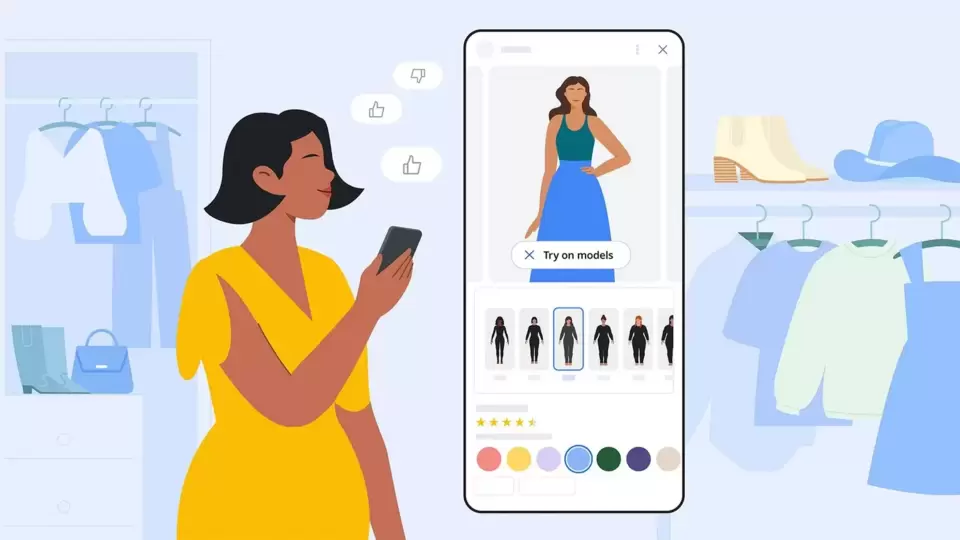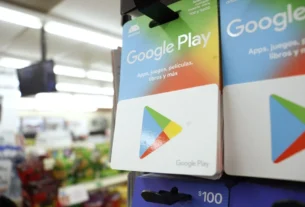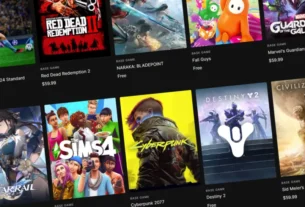In a major leap for the online retail experience, Google has unveiled a new feature that leverages generative AI (Gen AI) to allow users to virtually “try on” dresses before making a purchase. The tech giant’s innovative solution promises to make online shopping more interactive, personalized, and reliable, solving one of the biggest hurdles in e-commerce: the inability to physically try on clothing before buying.
Google’s new AI-powered try-on feature is designed to transform the way users shop for clothes online, offering them a more immersive and customized experience. The development highlights the rapidly evolving role of artificial intelligence in reshaping e-commerce, while also addressing long-standing consumer pain points related to fit, style, and purchasing confidence.
The Evolution of E-Commerce and Virtual Try-Ons
The global online shopping landscape has been rapidly evolving over the past decade, with e-commerce sales soaring to new heights. However, the ability to try on clothes, traditionally a key part of the in-store shopping experience, has remained a significant challenge in the digital space. Shoppers have often found themselves grappling with issues related to sizing, fit, and how an item would look on them in real life.
Previous attempts to tackle this problem have included static photos, 3D images, and rudimentary virtual try-on features that allow customers to visualize clothing on models of similar sizes. But many of these efforts fell short of providing a fully immersive or accurate experience. Google’s new feature aims to address these limitations by using advanced generative AI, which not only improves visual accuracy but also personalizes the experience to the specific shopper.
How Google’s AI-Powered Virtual Try-On Works
Google’s generative AI model uses complex algorithms to generate highly realistic images of how a dress will look on a shopper, based on their unique body shape, size, and preferences. By analyzing millions of data points from existing photos, videos, and user-provided inputs, the AI creates a realistic, interactive visual representation that allows users to “try on” dresses in real-time.
Here’s how the feature works:
- Body Shape Recognition: The AI analyzes users’ input regarding their body shape and measurements. This data allows the system to simulate how a dress would fit on a body similar to the user’s.
- Dress Visualization: Users can select a dress they’re interested in, and the AI generates a virtual image that shows how the fabric, color, and design will appear on their body type.
- Customization Options: The tool provides customization options for users to adjust aspects like size and fit. It can even predict how certain fabrics will drape or move, enhancing the realism of the try-on experience.
- Interactive Experience: Shoppers can rotate, zoom, and interact with the virtual image to see the dress from various angles, providing a much more comprehensive understanding of how the item would look on them in real life.
Tackling Fit, Fashion, and Personalization with Gen AI
What sets Google’s AI-driven try-on tool apart from previous attempts is its ability to account for a wide variety of body shapes and sizes, which have often been overlooked in traditional e-commerce models. By integrating body inclusivity, Google ensures that more users can feel confident in their purchasing decisions. The system generates accurate images not only for average body types but also for plus sizes and petite frames, helping users visualize fit without the guesswork.
Personalization is at the heart of this feature. The AI takes into consideration a user’s past purchasing habits, preferences for fit (e.g., snug or loose), and even style choices. This level of tailoring allows for a more accurate depiction of how a dress would actually fit and look, giving shoppers the chance to make better-informed decisions.
For example, if a user prefers looser, flowy dresses, the AI will simulate how the fabric will move on their body, providing a realistic sense of both fit and style. The system’s ability to mimic real-world conditions—such as how fabric drapes or how a particular style fits at different sizes—makes it easier for customers to gauge how a product might look and feel.
Impact on Retailers and E-Commerce Platforms
Google’s move into AI-powered shopping experiences is expected to shake up the e-commerce world, offering both consumers and retailers new ways to interact. For retailers, integrating Google’s virtual try-on feature could reduce the number of returns due to sizing issues, which is a major pain point for online businesses.
Clothing returns, particularly those related to improper fit, cost retailers billions of dollars annually. By allowing customers to “try on” dresses virtually, retailers stand to reduce this cost and improve customer satisfaction. Shoppers who are more confident in their purchases are less likely to return items, and they are more likely to complete sales—boosting overall e-commerce revenue.
For small and mid-sized fashion retailers, this tool levels the playing field. Many smaller retailers have not had access to sophisticated virtual try-on technologies, which are often costly to develop in-house. Google’s solution, which is likely to be made available as part of its broader e-commerce advertising ecosystem, allows these businesses to provide their customers with cutting-edge technology without having to invest in expensive development.
User Experience: Enhanced Confidence and Convenience
For shoppers, this tool provides a more seamless shopping experience, addressing the confidence gap that has long plagued online fashion purchases. The traditional model of buying multiple sizes or styles and returning the ones that don’t fit not only inconveniences the customer but also creates additional costs for retailers.
By using Google’s AI-powered virtual try-on feature, customers can see what a dress will look like on their own body shape, allowing them to choose more confidently and minimizing the need for returns. It also enhances the convenience of browsing through various styles and designs, trying them on virtually with just a few clicks, from the comfort of home.
One key element that sets this apart from static sizing charts is the dynamic interaction with the garment. Users can view how different sizes of the same dress might fit, explore different color options, and see how the dress flows—all in a digital environment that replicates the physical world.
Bridging the Gap Between In-Store and Online Shopping
The introduction of virtual try-on features is part of a broader trend that seeks to bridge the gap between the tactile, hands-on nature of in-store shopping and the convenience of e-commerce. For years, physical retailers have had a competitive advantage because customers could physically try on clothing and get a real sense of how a piece fit.
With the advent of technologies like Google’s AI-driven try-on feature, that gap is shrinking. Customers now have the ability to make informed decisions with confidence and precision, potentially reducing the need for in-person shopping. This could lead to a long-term shift in shopping habits, with even more consumers opting to shop online instead of visiting physical stores.
Privacy and Data Concerns
While the AI-powered tool offers numerous benefits, it also raises privacy concerns for some users. The system relies on users providing personal information about their body type, preferences, and sizes. Google has assured users that the data will be handled with care and that privacy will remain a top priority, but the nature of this personal data collection may still deter some individuals.
With growing concerns over data privacy and how tech companies use personal information, Google’s new feature will need to be carefully regulated to ensure that user data is not misused or improperly shared.
The Future of AI-Driven Fashion Shopping
Google’s entry into AI-powered virtual try-ons could pave the way for other companies to follow suit, leading to more immersive and personalized e-commerce experiences across the industry. As AI continues to develop, we may see more advanced features like real-time style recommendations, personalized clothing suggestions based on past purchases, and even more sophisticated body scanning technologies.
For now, Google’s new feature is a bold step toward making online shopping for fashion more intuitive and personalized, addressing long-standing issues that have held back the full potential of e-commerce.
Final Words : A Game-Changer for Online Fashion
The introduction of Google’s AI-driven virtual try-on feature marks a transformative moment for online fashion shopping. By using generative AI to give users the ability to see how a dress will look and fit on their unique body shape, Google is addressing one of the biggest challenges in e-commerce—providing shoppers with confidence in their purchases.
This technology not only enhances the shopping experience for consumers but also has the potential to significantly impact retailers by reducing returns and boosting sales. As AI continues to revolutionize the fashion industry, this feature could become a standard tool for online shopping, offering a glimpse into the future of personalized, AI-driven commerce.





